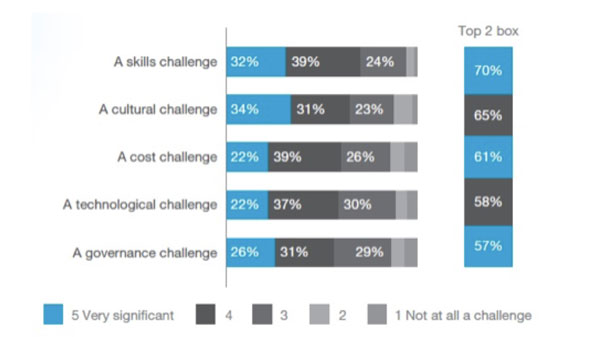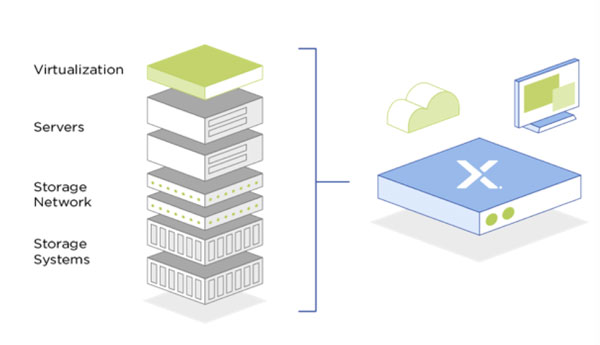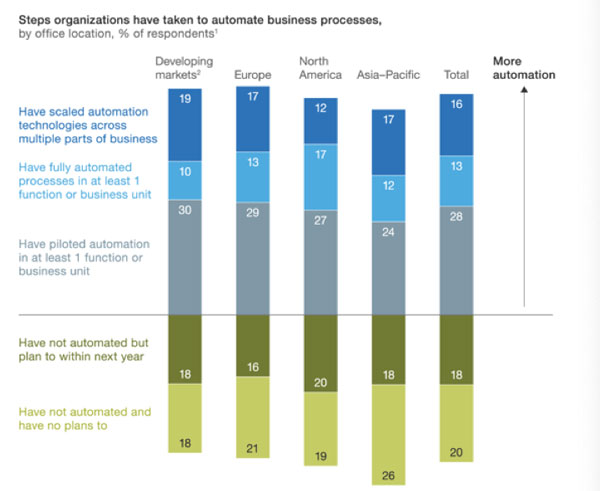Organizations are always on the lookout for ways to optimize internal DevOps through data storage and IT systems. Hybrid IT has emerged as the way to bridge the gap between internal and entirely cloud-based systems, allowing enterprises to provide continuous delivery.
Thanks to recent developments in cloud convergence and distributed software architecture, enterprises are no longer confined to internal servers to store all of their data. The shift towards cloud-based computing allows organizations to still access information instantly without the need for internal data storage that can easily be compromised or mismanaged.
However, the transition to entirely cloud-based data storage is not easy for all businesses. It requires major financial investments over time, and it can take weeks or months to transfer and organize critical data into a new cloud-based system.
The Cloud Native Comes of Age report from Capgemini found that most organizations struggle to make the shift to an entirely cloud-based system. The difficulty is commonly due to internal challenges or a lack of resources and organizational skills.

Source: Capgemini
However, it is impossible to deny the fact that the future of digital enterprises is shifting towards the cloud. And there is a solution that is making this transition far easier for businesses in all industries: hybrid IT.
What is Hybrid IT?
Hybrid IT allows businesses to utilize the best of both systems by combining internal server storage with cloud-based computing. Over 80% of enterprises currently use this service, and the shift towards hybridization has increased three-fold over the past few years.
This system of data storage and computing is becoming increasingly popular due to its flexibility. Hybrid solutions allow companies to benefit from cloud systems without entirely giving up their in-house services. A hybrid approach means data can be stored in both systems and accessed inside or outside the office.
But there are far more benefits to hybrid IT than just convenience. Its flexibility allows enterprises to provide continuous integration and deployment for optimized DevOps.
Hybrid IT Fosters Integrated Approaches
Although hybrid IT makes it easier for organizations to start the transition towards cloud-based systems, establishing this type of faculty is by no means easy or simple. For hybrid IT to be effective, the entire enterprise must adopt an integrated approach that connects all systems to both internal and external services.
A cloud-based infrastructure will always require digital adoption throughout an organization that hybridized IT will foster.
In order to sustain a hybrid IT service, organizations must find ways to support both traditional and transformational systems efficiently and effectively. This means that constraints and obstacles must be removed in order to support continuous delivery among all processes and platforms.
In order to do so, business leaders must find and integrate the necessary tools and software that can be used for all aspects of DevOps by multiple teams. A hyperconverged infrastructure (HCI) and virtualization can make this possible by increasing performance and productivity with IT teams. This fosters innovation, collaboration, and greater integration of data into decision-making and daily practices.

Source: Nutanix
The benefit here for enterprises is the fact that an adoption of hybrid IT requires a shift towards digital adoption, innovation, and greater integration across the board. Digital transformation is what fuels change and growth in the modern enterprise – and using hybrid IT can be the catalyst to get the ball rolling and drive innovation within an organization.
Improved Agility Through Automation
Moving towards hybridized IT systems allows enterprises to integrate automation into multiple applications. Most enterprises are currently introducing more automated systems within their practices, but while 57% of organizations plan to make this move within the near future, 38% have yet to start the process of automation.

Source: McKinsey
Hybrid IT systems provide a solid foundation upon which automated services can be built. Automation is also clearly necessary for continuous delivery and performance optimization; however, the public cloud is not always optimal due to its limitations in terms of speed, convenience, and agility. This is why a hybrid solution paves the way for IT automation.
The hybrid cloud supports consistent and repeatable deployments that can automate many practices. Further, a hybrid system offers more stability by increasing the availability of datasets.
Enables Business Continuity
One common (and reasonable) concern that keeps many enterprises from fully adopting cloud-based systems is the fear of data loss or reduced security. Internal storage systems that exist solely on the servers within an organization are considered safe, but this is not necessarily the case.
Internal server crashes are sadly a common occurrence, especially among smaller organizations that lack internal support to identify problems before they become a true crisis. A report on Global Disaster Recovery preparedness found that over one-third of all organizations have experienced data compromise or loss due to an internal server issue, and 25% of companies have lost access to all of their critical data for significant periods of time during these moments of crisis.
Hybrid IT provides a solution that can allow businesses to continue full operation even when one or more systems are experiencing failure. Using a hybrid cloud means that a business can continue to operate during a failure or disaster due to multiple backup recovery systems – whether it be in an internal server or the private cloud.
This can either lessen or fully eliminate downtime for data access, allowing enterprises to sustain continuous delivery while those issues are being addressed.
“Hybrid” is Synonymous with Change
Although there is little doubt the future of technology will exist in the cloud, hybrid IT is certainly an option that enterprises should not ignore. It provides organizations with the tools they need to remain competitive through supported system integration, automation, and secure services.
All of these features facilitate continuous delivery and scalability. Adopting a hybrid IT system enables businesses to keep up with today’s fast-paced digital environment and stay nimble in transformation.
Featured Image: Pixabay
Dipti Parmar is a contributing writer. She has written for CIO.com, Entrepreneur, CMO.com and Inc. magazine. Follow her on Twitter @dipTparmar.
© 2019 Nutanix, Inc. All rights reserved. For additional legal information, please go here.

